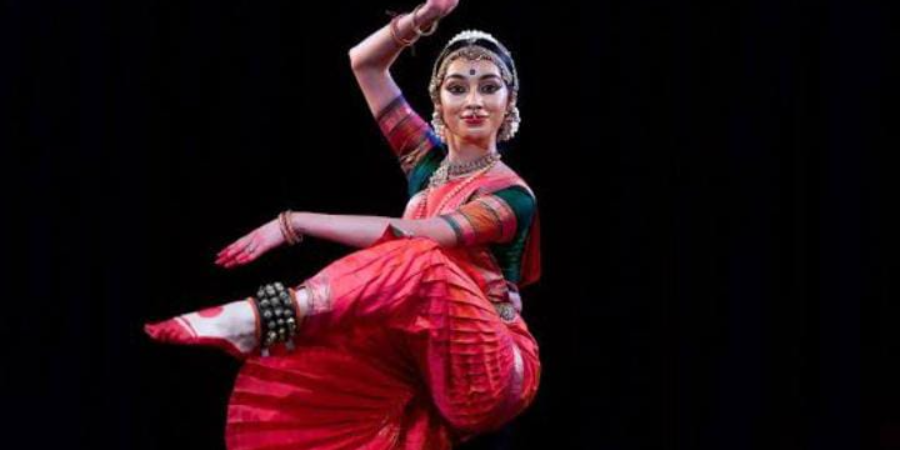

The origins of Bharatanatyam, one of India's oldest classical dance styles, may be found in the Tamil Nadu temples. This dance style, which is deeply rooted in tradition, embodies the rich cultural legacy of India via an enthralling fusion of expressive narrative, deft footwork, and graceful gestures.
Origins and History
The Natya Shastra, an old Sanskrit work on performing arts credited to the sage Bharata Muni, is where Bharatanatyam got its start and is where it all began more than 2,000 years ago. Bharatanatyam was traditionally performed by Devadasis, ladies devoted to serving in temples, who did this dance as a sign of adoration for the gods. Before developing into the modern Bharatanatyam, the dance style was once known as Sadir Natyam or Dasi Attam.
Parts and Organisation
The three main elements of Bharatanatyam are Nritta, Nritya, and Natya.
Pure dance movements are used in nritta, with an emphasis solely on technique and rhythm rather than interpretation.
Nritya uses hand gestures and facial expressions along with rhythm to tell a tale or express a feeling.
The dramatic element is Natya, who frequently tells stories from epics and mythology in India.
The dance is usually done to Carnatic music, and expressive hand and facial movements, known as mudras and abhinaya, are used to enhance the intricate footwork. Typically, the performance is organised as follows: an invocatory piece called Alarippu opens the show, then pure dancers Jatiswaram and Shabdam dance, expressive dancers Varnam and others, and a joyful, rhythmic finale called Tillana.
Presentation and Attire
A Bharatanatyam dancer's traditional attire is colourful and ornate, consisting of a lavishly embellished saree with pleats that flow elegantly during specific dance movements. The dancer's elaborate jewellery consists of bangles, necklaces, earrings, and a headdress. Red dye (alta) is used to highlight motions and footwork, while kohl is used to accentuate the eyes to enhance expressions.
Important parts of the outfit consist of:
Saree or Dance Dress: The saree looks great with a choli blouse and a dhoti-style bottom. The pleats are expertly sewn and frequently adorned to enhance richness with zari, or gold or silver thread.
Bodice and Fan: The fan-shaped pleats at the waist, which stretch out beautifully with leg movements, highlight the dancer's dexterity and agility. The upper portion features a fitted bodice.
Accessories and Jewels
As important as the costume itself, the jewellery worn by Bharatanatyam dancers adds to the entire aesthetic and cultural expression. Typically crafted from gold-plated metal and embellished with stones and occasionally pearls, these ornaments showcase the traditional artistry of South India.
Important pieces of jewellery consist of:
Headpiece (Nethichutti): Featuring a central pendant, it draws attention to the forehead and enhances the dancer's ability to make elegant facial expressions.
Jhumkas, or extravagant earrings, are worn by dancers to provide a rhythmic brilliance. They frequently hang and move with the dancer.
Necklaces: The neck and chest region are adorned with several layers of necklaces, including chokers and lengthier pieces.
Armlets and bangles (Vanki): These are worn on the wrists and arms to draw attention to hand gestures and movements (mudras).
Belt (Ottiyanam): An ornate belt tightens the waist, maintaining the pleats' position and enhancing the silhouette as a whole.
Bharatanatyam makeup and hairstyles are dramatic and bold to make sure the audience can see the dancers' expressions even when they are far away.
Eyes: The eyes are made to appear larger and more expressive by extensively lining them with kohl and enhancing them with eye shadow.
Face: Deep crimson lipstick lines the lips, and a bindi adorns the forehead.
Hair: Typically, the hair is worn in a long braid and embellished with flowers (typically jasmine) and occasionally gold or jewelled pieces. The braid ends in an ornamental piece that swings in sync with the dancer's moves.
Importance and Cultural Setting
Every component of the Bharatanatyam clothing has cultural and symbolic importance; it is not just ornamental. The colours are used to convey concepts of divinity and festivity; these are frequently auspicious tints like red, green, and gold. The jewellery and cosmetics are designed to make the dancer appear exquisite on stage, drawing inspiration from classical aesthetics and temple sculptures.
Furthermore, the elaborate presentation of Bharatanatyam immerses the audience in a world of myth and legend through everything from the costume to the jewellery and cosmetics. Each performance is a complete artistic experience because of the way the visual magnificence harmonises with the dance's spiritual and narrative depth.
Cultural Importance
Because of its emphasis on mental and physical discipline, Bharatanatyam is frequently seen as a type of yoga. It is not only a dancing style; it is a spiritual experience. It contributes significantly to the preservation of Indian culture and customs, with themes frequently centred around love, devotion, and moral principles drawn from Hindu mythology.
Contemporary Modifications
Bharatanatyam has a strong tradition foundation, yet it has also changed over time. To make dance more approachable to a wider range of viewers, contemporary choreographers and dancers experiment with topics, music, and presentation, fusing traditional methods with contemporary stories. The beauty, grace, and deep storytelling of Bharatanatyam continue to enthral audiences around the world, even in the face of these advancements.
In summary
With its elaborate artistry and deep historical origins, Bharatanatyam is a monument to India's continuing cultural history. This traditional dance style not only upholds the aesthetic customs of the past but also captivates the hearts of younger generations with its constant inspiration and evolution.
